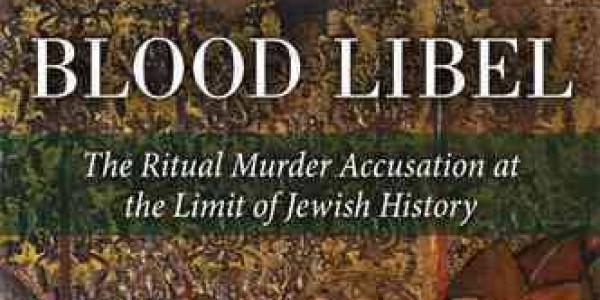Blood Libel: The Ritual Murder Accusation at the Limit of Jewish History
"What happens afterward hinges on religious hostility and the misunderstandings it has often fed between Christian..."
31/12/2012 | Na stronie od 18/05/2021

Source: University of Michigan Press
Hannah R. Johnson
Table of Contents
INTRODUCTION The Ethical Dimensions of Historical Interpretation: The Blood Libel as Limit Case
(pp. 1-29)
The story begins with the discovery of a child’s body. Most commonly it is a boy, though occasionally it could be more than one child, or a girl. The body might be discovered in a sewer drainage ditch, perhaps in a wood. The setting is generally a medieval town. The child is a Christian and he is young. He could be two years old or twelve. He might have been missing for days, or just overnight. But the body’s discovery is only the beginning. What happens afterward hinges on religious hostility and the misunderstandings it has often fed between Christian...
CHAPTER 1 Thomas of Monmouth and the Juridical Discourse of Ritual Murder
(pp. 30-58)
Near the end of his account of the life and miracles of William of Norwich, Thomas of Monmouth records a case of blasphemy punished. Thomas tells us that a certain man named Walter, a fellow monk in the Norwich priory, made a habit of disparaging “the holiness and miracles” of little William.¹ Though repeatedly warned to stop mocking the saint, Walter never listened. Finally, after being visited in a dream by William and soundly beaten by the saint for his sin, he awoke in terror and “felt the smart of severe pains all over him,” the blows just as real...
CHAPTER 2 Moralization and Method in Gavin Langmuir’s History of Antisemitism
(pp. 59-90)
In the midst of his tendentious account of William’s death and afterlife, Thomas of Monmouth composes an imaginary speech for the Jews who are accused of the crime and pictures them deliberating among themselves about the consequences of discovery.
Our people will be utterly driven out [funditus exterminabitur] from all parts of England . . . we, our wives and our little ones will be given over as a prey to the barbarians, we shall be delivered up to death, we shall be exterminated [dabimur in exterminium].¹
Further on in Thomas’s narrative, he reports the words of an ecclesiastical synod...
CHAPTER 3 On Being Implicated: Israel Yuval and the New History of Medieval Jewish-Christian Relations
(pp. 91-128)
In his Life and Miracles of William of Norwich, the monk Thomas of Monmouth calls up a casual remark he might have heard in the street or marketplace. The Norwich Jews, he writes,
used to rail at us insolently, saying, “You ought to be very much obliged to us, for we have made a saint and martyr for you. Verily we have done you a great deal of good, and a good which you retort upon us as a crime. Aye! we have done for you what you could not do for yourselves.” (II.95)¹
Thomas’s outrage at this provocative behavior...
CHAPTER 4 Beyond Implication: The Ariel Toaff Affair and the Question of Complicity
(pp. 129-164)
In previous chapters, I argued that a shift in ethical discourses is visible in recent scholarship on the ritual murder accusation. I suggested that scholars like Gavin Langmuir, Israel Yuval, and Elliott Horowitz can be located on a continuum between moralization and ethical deliberation that is operative, in a larger sense, within the ‹eld of medieval Jewish studies, particularly in analysis of pivotal sites of historical interpretation and debate I describe as “limit events.” Throughout, my focus has been on the ethical question of responsibility—often figured as blame—that haunts the scholarly conversation about the charge of ritual homicide....